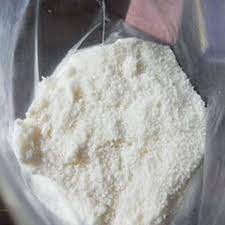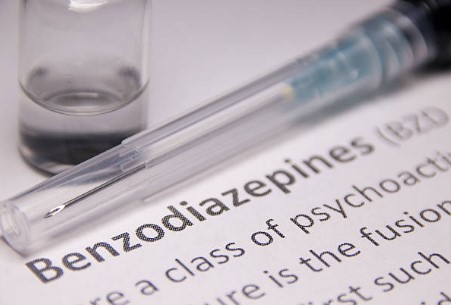The use of synthetic drugs has been on the rise in recent years, causing concern among health professionals and law enforcement agencies. These drugs, also known as “designer drugs” or “legal highs”, are chemically produced substances that mimic the effects of illegal drugs such as marijuana, cocaine, and ecstasy.
In this article, we will explore the rise of synthetic drugs, their effects on the body, and the challenges they pose for drug testing and regulation.
What Are Synthetic Drugs?
Synthetic drugs are man-made substances that are designed to mimic the effects of illegal drugs. They are often marketed as “legal highs” or “herbal incense” and are sold in small packets with colorful packaging and catchy names.
These drugs are created by altering the chemical structure of existing drugs, making them difficult to detect and regulate. They are often sold in gas stations, convenience stores, and online, making them easily accessible to the public.
Types of Synthetic Drugs
There are various types of synthetic drugs, each with its own unique effects and risks. Some of the most common types include:
- Synthetic cannabinoids: These drugs are designed to mimic the effects of marijuana and are often sold as “herbal incense” or “spice”. They can cause hallucinations, paranoia, and increased heart rate.
- Synthetic stimulants: These drugs are designed to mimic the effects of cocaine and amphetamines. They can cause increased energy, euphoria, and agitation.
- Synthetic narcotics: These drugs are designed to mimic the effects of opioids such as heroin and prescription painkillers. They can cause sedation, respiratory depression, and addiction.
- Semi-synthetic drugs: These drugs are created by combining natural and synthetic substances. Examples include synthetic opioids like fentanyl and semi-synthetic cannabinoids like K2.
The Rise of Synthetic Drugs
The use of synthetic drugs has been on the rise in recent years, particularly among young adults and teenagers. This is due to their easy accessibility, low cost, and the misconception that they are “safe” because they are sold legally.
According to the National Institute on Drug Abuse, synthetic cannabinoids were the second most commonly used illicit drug among high school seniors in 2019, after marijuana. The use of synthetic stimulants and synthetic narcotics has also been on the rise, with an increase in emergency room visits and deaths related to these drugs.
Why Are Synthetic Drugs So Popular?
Synthetic drugs are popular for several reasons:
- They are easily accessible: These drugs are often sold in gas stations, convenience stores, and online, making them easily accessible to the public.
- They are cheap: Synthetic drugs are often cheaper than their illegal counterparts, making them an attractive option for those looking for a cheap high.
- They are difficult to detect: The constantly changing chemical structure of synthetic drugs makes them difficult to detect in drug tests, making them popular among individuals who are subject to drug testing.
- They are perceived as “safe”: Many people believe that because these drugs are sold legally, they must be safe. However, the truth is that these drugs can be just as dangerous, if not more so, than illegal drugs.
Effects of Synthetic Drugs on the Body

The effects of synthetic drugs on the body can vary depending on the type of drug and the individual’s reaction to it. However, some common short-term and long-term effects include:
Short-Term Effects
- Increased heart rate and blood pressure
- Hallucinations and paranoia
- Nausea and vomiting
- Agitation and aggression
- Seizures
- Respiratory depression
- Coma
Long-Term Effects
- Addiction
- Organ damage
- Memory loss
- Psychosis
- Cardiovascular problems
- Respiratory problems
- Increased risk of stroke and heart attack
Challenges of Drug Testing for Synthetic Drugs
One of the biggest challenges with synthetic drugs is detecting them in drug tests. Traditional drug tests are designed to detect specific substances, and since synthetic drugs are constantly changing, they can be difficult to detect.
Additionally, many synthetic drugs are not yet illegal, making it difficult for employers and law enforcement agencies to take action against individuals who test positive for these drugs.
Regulation of Synthetic Drugs
The constantly changing chemical structure of synthetic drugs makes it difficult for lawmakers to regulate them effectively. As soon as one substance is banned, manufacturers can simply alter the chemical structure slightly to create a new, legal substance.
In response to this challenge, the United States government passed the Synthetic Drug Abuse Prevention Act in 2012, which banned 26 types of synthetic drugs. However, manufacturers continue to create new substances that are not yet covered by this law.
Conclusion
The rise of synthetic drugs is a growing concern for health professionals and law enforcement agencies. These man-made substances are easily accessible, difficult to detect, and can have serious short-term and long-term effects on the body.
To combat the use of synthetic drugs, it is important for individuals to be educated about the dangers of these substances and for lawmakers to continue to work towards effective regulation. Only through education and regulation can we hope to reduce the use of synthetic drugs and protect the health and safety of our communities.








Leave a comment
You must be logged in to post a comment.